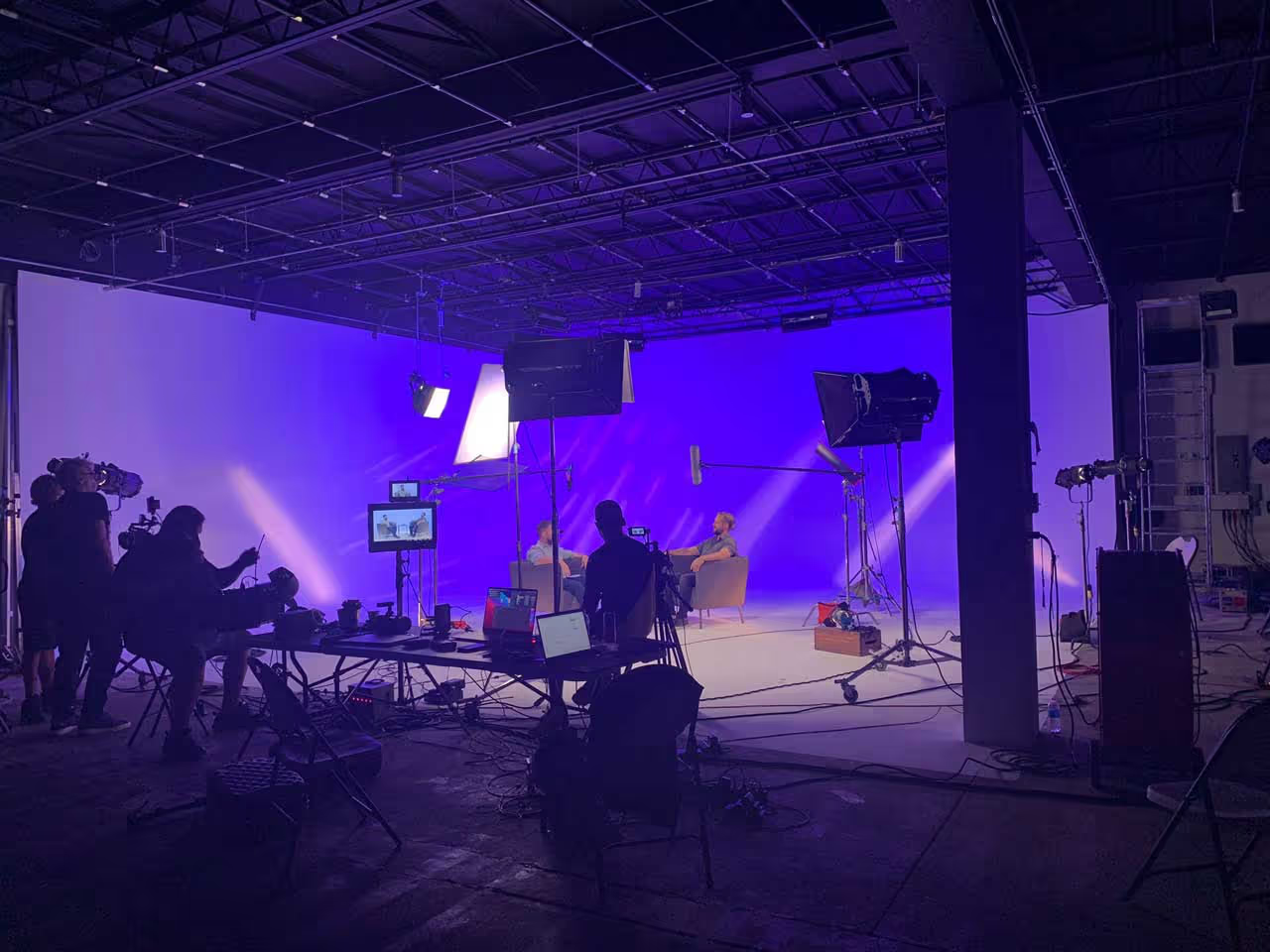Table of Contents
Good content marketing means telling a good story, and how well you tell it matters.
People remember 95% of a message from a video, compared to only 10% from reading text. Animated videos make even the trickiest ideas easy to understand and entertaining for your audience.
Let's talk perks. Whether you're introducing a new app, promoting a service, or need animated intros for your podcast, animation can bring your message to life in the right way without creative limits.
In this long article, we'll cover everything about making animated videos in 2024. If you want to jump to different sections, we've put some useful links here:
What is Animated Video Production?

It's a creative process using hand-drawn illustrations and animations to design and make videos. These videos can share different messages, from promoting a product to explaining complex ideas. Using animated videos in marketing boosts engagement, helps people remember the message, and improves your brand image.
Different Animation Styles and Where to Use Them
Animation has evolved significantly from the days of hand-drawn cartoons. Thanks to technological advancements, creators now have various animation styles to choose from, each with its own unique features and creative possibilities. Whether it's 2D and 3D animations, stop-motion, or motion graphics, each style brings a distinctive aesthetic and storytelling potential.
Whiteboard Explainers
Whiteboard animation simulates an artist drawing on a whiteboard, creating the illusion of a time-lapse drawing. This style is commonly used for educational, instructional, and marketing videos. It effectively communicates complex ideas and captivates audiences with short attention spans. Use cases include animated explainer videos, product demonstrations, training, sales presentations, marketing videos, public service announcements, and internal business communication.
Motion Graphics Animation
Motion graphics animation combines graphic design with animation, creating moving graphics. It's a versatile style used for branding, marketing, entertainment, and educational content. Typically created digitally, it includes elements like text, shapes, images, and video footage. Common use cases encompass branding and logo animations, title sequences for films and TV shows, promotional videos, infographics, social media content, e-learning, digital signage, and animated GIFs.
Also read: Video Marketing Strategy: Tips and Best Practices for Effective Campaigns
2D Animation
2D animation involves creating flat, two-dimensional images animated to simulate movement. It's a classic style widely used in cartoons, animated films, and TV shows, as well as in corporate training videos, product demonstrations, marketing videos, and educational content.
3D Animation
3D animation creates three-dimensional computer-generated images animated to simulate movement. Widely used in film, gaming, and advertising, 3D animation offers depth and realism beyond traditional 2D animation. Common applications include animated films and TV shows, video game animation, architectural visualization, product design, industrial simulations, medical and scientific visualizations, virtual reality experiences, and marketing and advertising videos.
Stop-Motion
Stop-motion animation captures individual frames of an object or scene in slightly different positions, creating movement when played sequentially. This engaging style stands out and is used in commercials, music videos, short films, web series, educational content, promotional videos, social media content, product demonstrations, and title sequences for films and TV shows.
Choosing the right animation style depends on your content goals and the message you want to convey. Each style has its unique strengths and applications in various contexts.
What to Include in an Animated Video?

A good animated video should tell a story and have a clear message. It needs to be short, catchy, attention-grabbing, interesting, and enjoyable. The best animated videos usually have these key features:
- Clear and Simple Message: Make sure your message is easy for your audience to understand and support.
- Visual Cues: If your product or service is complicated, use animated visuals to help your audience connect the dots and understand your message better.
- Your Brand's Identity: Feature your brand's voice, colors, logos, and other visual elements to make your video stand out from the competition.
- Use Case or Testimonial: Show real examples or testimonials to let the results speak for themselves.
- Call to Action: Persuade viewers to explore your business's products or services further.
How Long Should an Animated Video Be?

Your audience's attention is precious, so it's important not to waste it. Being brief in your communication is key. In general, most animated videos are about 90 seconds long. This gives you enough time to convey your message without overwhelming your potential customers with information.
If you think your animation needs to be longer, it's okay—just make sure it adds value.
How Animated Videos Are Made
Understanding how to create a good animated video is important.
Planning (Pre-production):
- Concept Development: This is where the idea for the video is created. It involves figuring out what the video is about, who it's for, and coming up with creative ideas to get the message across.
- Animation Style Selection: Different styles of animation like 2D, 3D, or stop-motion are chosen based on what the video is about and who will watch it.
- Script Writing: The initial idea turns into a story. A well-written script grabs the viewer's attention, communicates the message, and keeps them interested.
- Storyboarding: A storyboard is a visual plan that shows how the video will look. It helps fix any issues before making the actual video.
- Voiceover Selection: Choosing the right voice is important. The voice should match the video's tone and engage the viewer.
Creating the Video (Production):
- Asset Creation: This involves making the pictures and backgrounds used in the video using software like Adobe Illustrator and Photoshop.
- Animating the Video: Animating brings the pictures and story to life using animation software. This includes making things move, adding effects, and syncing with the voiceover.
- Sound Effects and Music Selection: Music and sound effects make the video more interesting. They need to match the video's tone and get the message across.
- Recording and Syncing the Voiceover: The voice is recorded and matched with the animation to make a complete and interesting video.
Finalizing (Post-Production):
- Editing and Refining the Animation: The animation is polished to make sure it looks good and keeps the viewer's attention.
- Color Grading and Special Effects: Adjusting colors and adding effects improves the video's visual appeal, making it more immersive.
- Sound Design and Mixing: Fine-tuning the audio, adjusting volume, adding music and sound effects, and making sure everything syncs up.
- Exporting the Final Video: Once everything is done, the final video is saved in the right format and quality. It can then be shared on social media, YouTube, or a website.
Start Your Animated Video Production With Us!
Bring your imagination to life with Get Camera Crew captivating 2D & 3D animation video production! We craft stunning motion graphics, animated explainer videos, and character-driven stories that engage, inform, and inspire. Our team of animation experts will collaborate with you, transforming your vision into a pixel-perfect masterpiece. From concept development and storyboarding to meticulous animation and final rendering, we handle every step, ensuring your vision shines through. Ditch the boring whiteboard presentations and captivate your audience with the power of vibrant animation. Contact Get Camera Crew today and let's animate your ideas!






